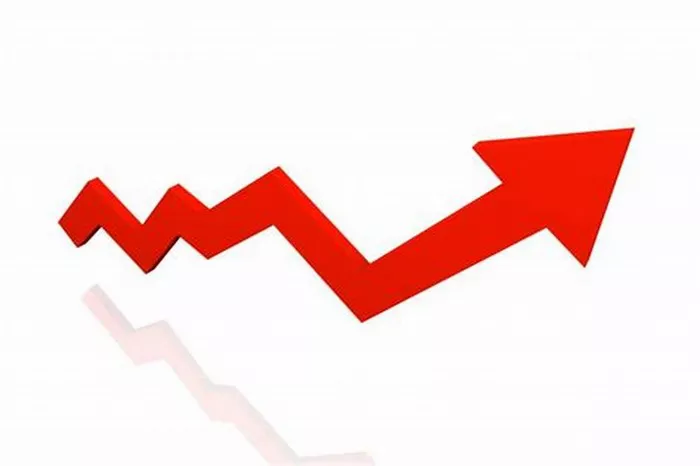The potential collapse of the U.S. dollar, often considered a cornerstone of global finance, can have profound and far-reaching effects on the stock market. Understanding these impacts is crucial for investors, policymakers, and businesses alike. This article explores 8 major impacts of a dollar collapse on the stock market, providing a comprehensive and objective analysis.
Introduction
The U.S. dollar plays a pivotal role in the global economy. As the world’s primary reserve currency, it is central to international trade, finance, and investment. However, the dollar’s dominance is not guaranteed, and a collapse—though unlikely—could have significant consequences. A dollar collapse can be triggered by various factors, including excessive debt, loss of confidence, and geopolitical tensions. This article delves into the potential impacts of such a scenario on the stock market.
1. Inflationary Pressures
Rising Costs of Imports
A collapse of the dollar would lead to a significant depreciation of its value. As a result, the cost of imports would skyrocket. Goods and services that rely on imported materials would become more expensive, leading to inflationary pressures within the economy.
Impact on Consumer Prices
With higher import costs, consumer prices for everyday goods and services would increase. This inflation would reduce consumers’ purchasing power, potentially leading to a decrease in consumer spending, which is a critical driver of economic growth.
2. Increased Volatility in the Stock Market
Investor Uncertainty
A dollar collapse would create significant uncertainty among investors. This uncertainty often leads to increased volatility in the stock market as investors react to rapidly changing economic conditions and attempt to protect their portfolios from potential losses.
Speculative Trading
In times of economic instability, speculative trading tends to increase. Investors may engage in short-term trading strategies to capitalize on market fluctuations, further contributing to market volatility.
See Also: 8 Reasons Why Amazon’s Share Price Is Falling
3. Flight to Safe-Haven Assets
Gold and Precious Metals
In the event of a dollar collapse, investors typically seek refuge in safe-haven assets like gold and other precious metals. These assets are perceived as stores of value and tend to perform well during times of economic uncertainty.
Foreign Currencies
Investors may also diversify their portfolios by purchasing foreign currencies that are perceived as more stable. This shift can lead to significant changes in currency exchange rates and impact international trade and investment flows.
4. Decline in Foreign Investment
Loss of Confidence
A collapse of the dollar would likely lead to a loss of confidence among foreign investors. The U.S. has traditionally been seen as a safe and stable investment destination, but a dollar collapse would undermine this perception.
Capital Outflows
As confidence wanes, foreign investors may pull their capital out of U.S. markets, leading to significant outflows. This capital flight can exacerbate economic instability and put further downward pressure on the stock market.
5. Impact on Multinational Corporations
Earnings Pressure
Multinational corporations with significant operations in the U.S. would face pressure on their earnings. A weaker dollar would reduce the value of their dollar-denominated revenues when converted to their home currencies.
Operational Challenges
These corporations may also face operational challenges, such as increased costs for imported raw materials and difficulties in managing currency risk. These challenges can impact their profitability and stock performance.
6. Changes in Interest Rates
Federal Reserve Response
In response to a dollar collapse, the Federal Reserve may take measures to stabilize the economy, such as raising interest rates. Higher interest rates can attract foreign capital but also increase borrowing costs for businesses and consumers.
Impact on Borrowing Costs
Higher interest rates would lead to increased borrowing costs for corporations and individuals. This can reduce business investment and consumer spending, further impacting economic growth and stock market performance.
7. Shifts in Global Trade Dynamics
Export Competitiveness
A weaker dollar can make U.S. exports more competitive on the global market. While this can be beneficial for U.S. exporters, it may not be enough to offset the negative impacts of a dollar collapse.
Trade Imbalances
Changes in trade dynamics can lead to imbalances that affect the global economy. Countries that rely heavily on exports to the U.S. may face economic challenges, which can impact their stock markets and create ripple effects worldwide.
8. Potential for a Financial Crisis
Systemic Risks
A dollar collapse could pose systemic risks to the global financial system. The interconnectedness of financial markets means that a crisis in the U.S. can quickly spread to other economies, leading to a global financial crisis.
Banking Sector Impact
The banking sector could be particularly vulnerable. Banks with significant exposure to dollar-denominated assets and liabilities may face solvency issues, leading to a loss of confidence in the financial system and further market turmoil.
Conclusion
The collapse of the U.S. dollar would have profound and far-reaching effects on the stock market. From inflationary pressures and increased volatility to shifts in global trade dynamics and the potential for a financial crisis, the impacts would be significant and multifaceted. Investors, policymakers, and businesses must remain vigilant and proactive in managing these risks to navigate such a challenging economic scenario successfully.
In conclusion, while the likelihood of a dollar collapse remains low, it is essential to understand its potential impacts on the stock market. By doing so, stakeholders can better prepare for and mitigate the risks associated with such an event.
Related topics:






























